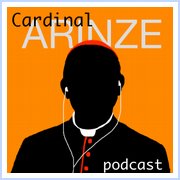Monday, January 24, 2005
Book review!
The first four chapters, "Building a Synoptic Theory", comprise nearly half the book and are devoted to Wenham's analysis of the Synoptic problem. He examines the relationship of each of the Synoptics to each other (devoting a chapter apiece on Luke's relationship to Mark, Luke's relationship to Matthew, and Matthew's relationship to Mark). In subsequent chapters, Wenham takes a look at ancient testimony to Matthew's Gospel followed by that of Mark's Gospel. A chapter discussing the date of Peter's going to Rome is then followed by one devoted to further considerable issues pertinent to Mark (e.g. Mark being the founder of the church of Alexandria, the controversial 7Q5 Qumran manuscript fragment, and the issue of eyewitness testimony in Mark). A chapter on the ancient witness to Luke's Gospel then precedes a chapter that examines how the Gospels were written. The penultimate chapter details the importance of oral vs. written Jesus tradition by the early church. Finally, in the concluding chapter, Wenham proposes a dating for the Synoptic Gospels based on his conclusions regarding the issues examined leading up to that point.
Wenham argues persuasively, based on the external evidence, that Matthew wrote first in Aramaic, followed by Mark and then Luke (this corroborates the conclusions drawn here on Tekton; see here). It is shown why the majority of the arguments favoring Markan priority are either flawed or equivocal, and that the internal evidence suggests that Matthean priority is at least as plausible. The author demonstrates in at least a couple of instances why Matthean priority would be more likely, though he concludes in the end that the internal evidence could reasonably lead in either direction. It is the external testimony of the church fathers which seems to tip the scales in favor of Aramaic Matthew being the first Gospel, rather than the internal evidence itself. A key assertion to Wenham's dating rests on the veracity of his claim that Peter first went to Rome soon after his escape from prison in about 42 A.D. He candidly admits that he is challenging the scholarly consensus when it comes to this issue, though he does note "Of the nine major works on Peter in English this century, seven have been quite disinclined to dismiss the old view" [147]. The author, building largely off the case argued near the beginning of the 20th century by G. Edmundson, peruses the evidence for this 25 year Episcopate of Peter in Rome. If the external evidence, based on archaeological findings and the writings of the early church, were all that we had to go on, I'd consider the impressive array of evidence presented by Wenham to render the matter settled in favor of the veracity of Peter's 25 year Episcopate.
Wenham argues persuasively, based on the external evidence, that Matthew wrote first in Aramaic, followed by Mark and then Luke (this corroborates the conclusions drawn here on Tekton; see here). It is shown why the majority of the arguments favoring Markan priority are either flawed or equivocal, and that the internal evidence suggests that Matthean priority is at least as plausible. The author demonstrates in at least a couple of instances why Matthean priority would be more likely, though he concludes in the end that the internal evidence could reasonably lead in either direction. It is the external testimony of the church fathers which seems to tip the scales in favor of Aramaic Matthew being the first Gospel, rather than the internal evidence itself. A key assertion to Wenham's dating rests on the veracity of his claim that Peter first went to Rome soon after his escape from prison in about 42 A.D. He candidly admits that he is challenging the scholarly consensus when it comes to this issue, though he does note "Of the nine major works on Peter in English this century, seven have been quite disinclined to dismiss the old view" [147]. The author, building largely off the case argued near the beginning of the 20th century by G. Edmundson, peruses the evidence for this 25 year Episcopate of Peter in Rome. If the external evidence, based on archaeological findings and the writings of the early church, were all that we had to go on, I'd consider the impressive array of evidence presented by Wenham to render the matter settled in favor of the veracity of Peter's 25 year Episcopate.



